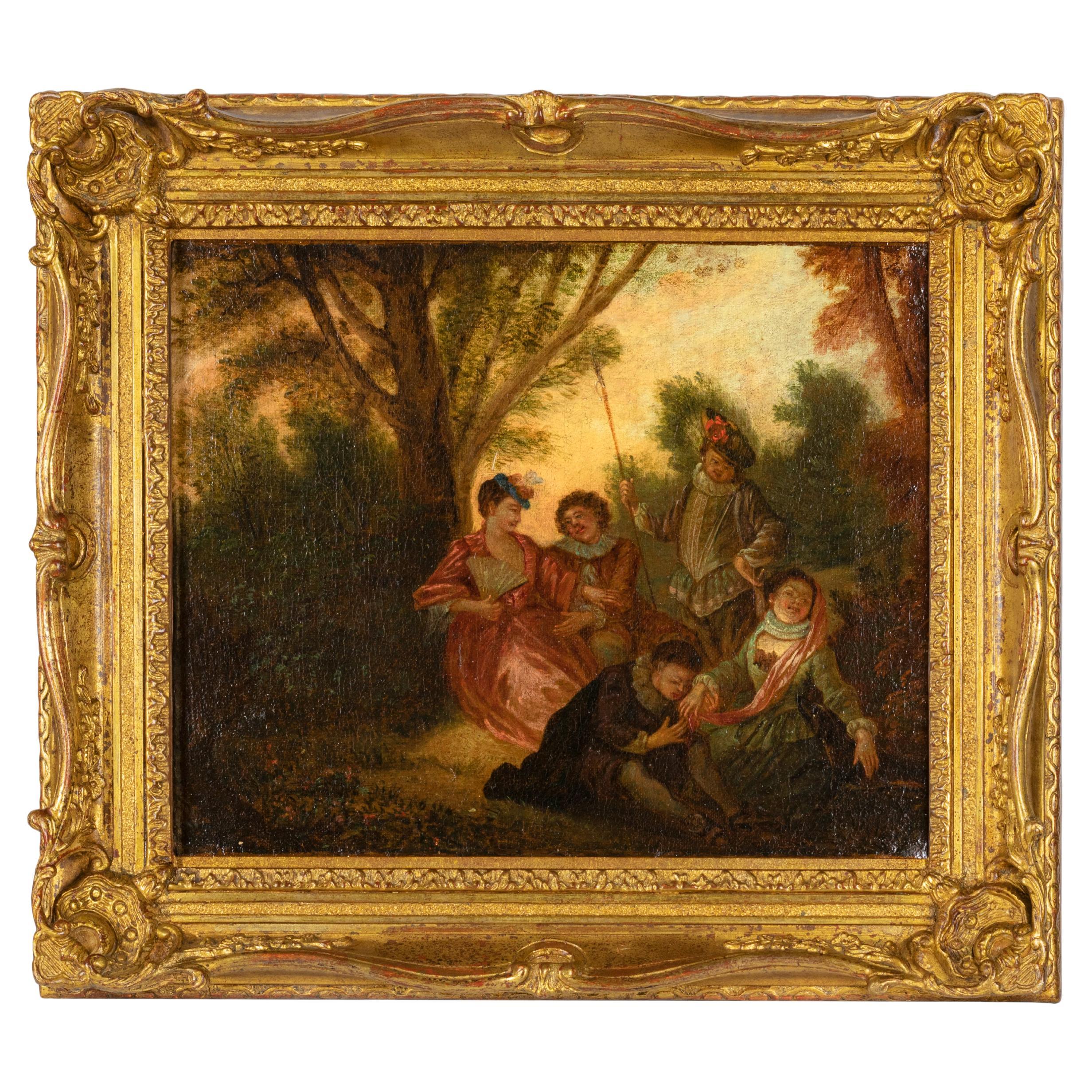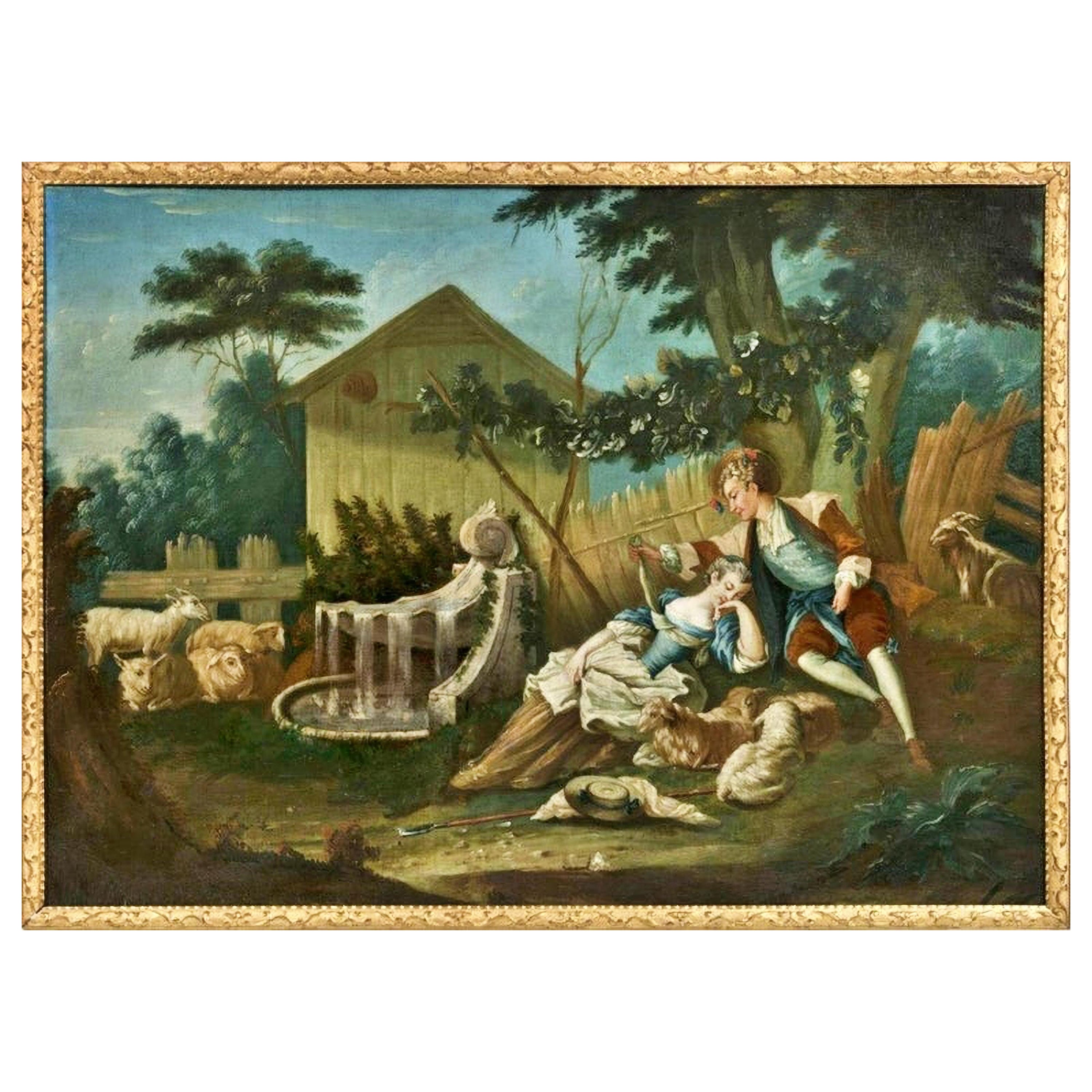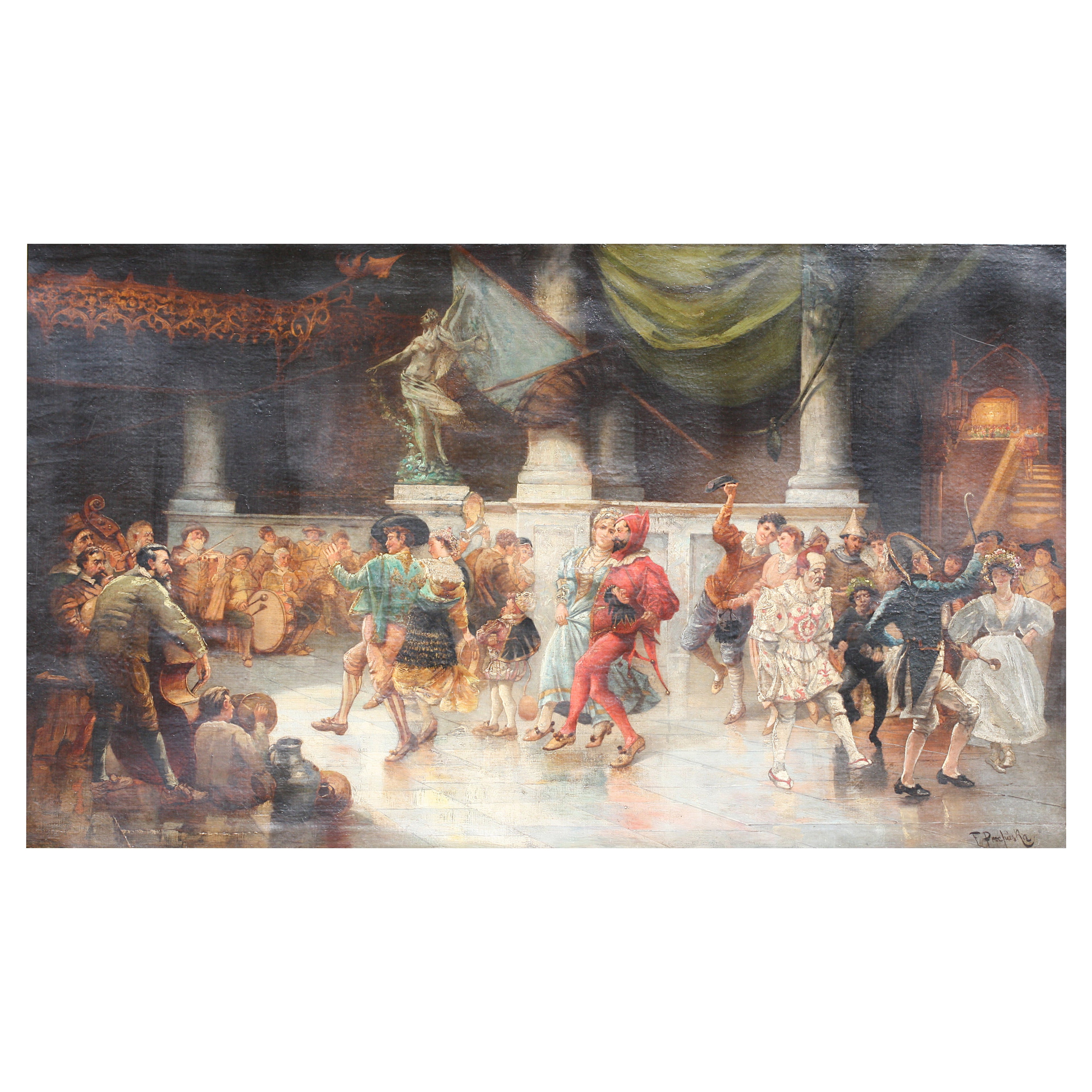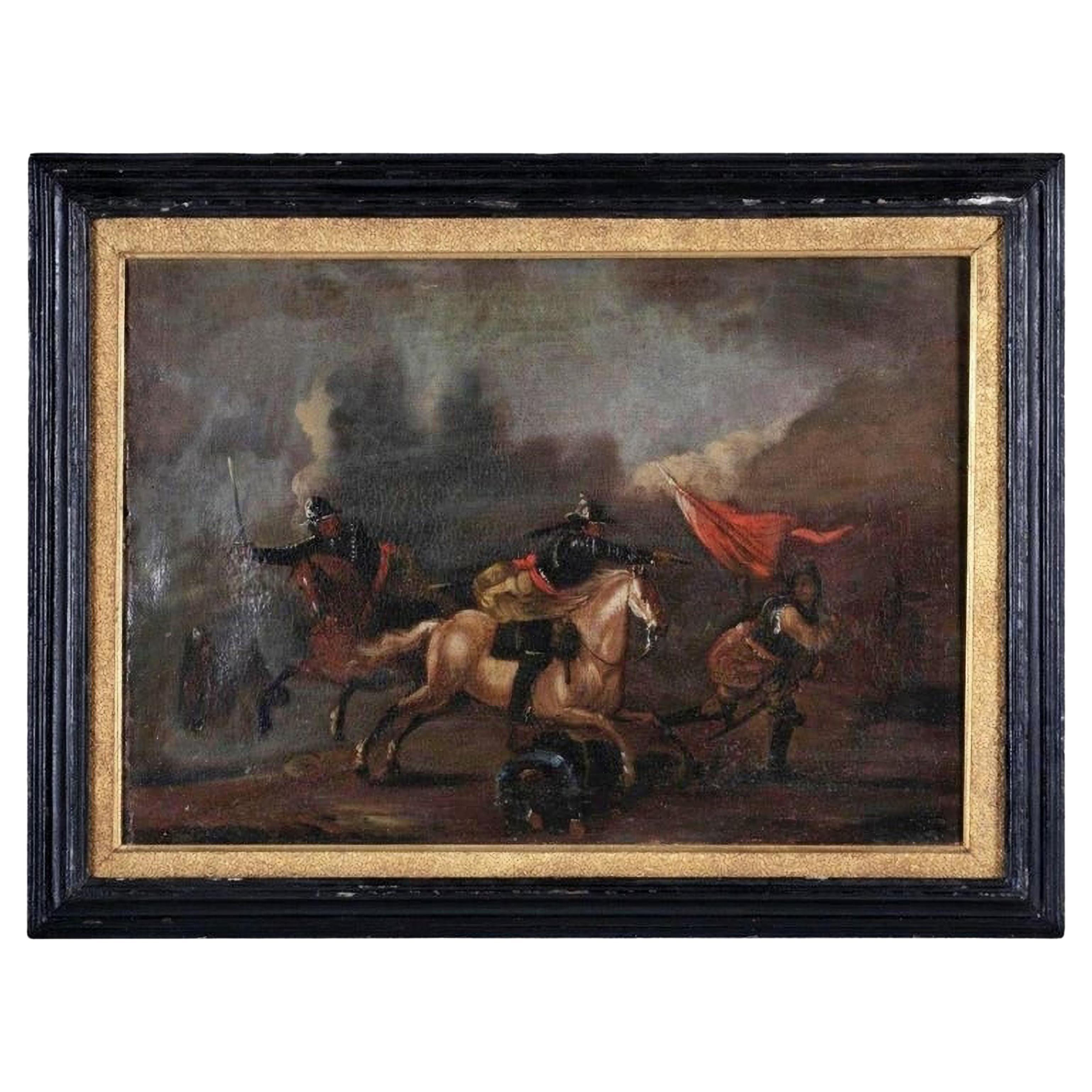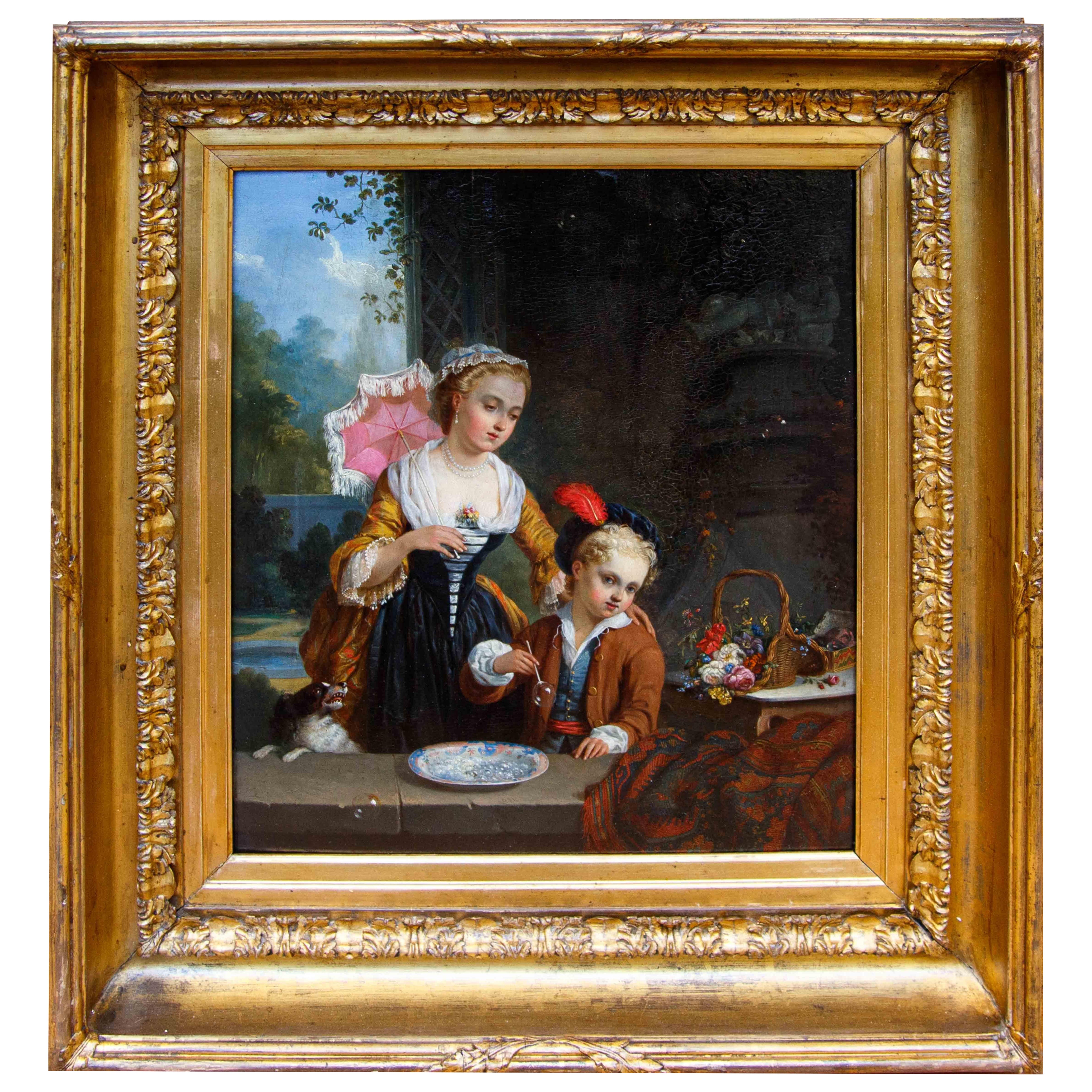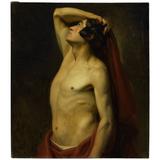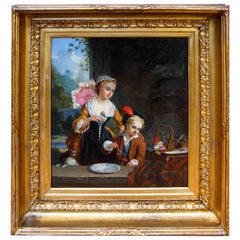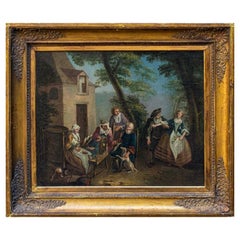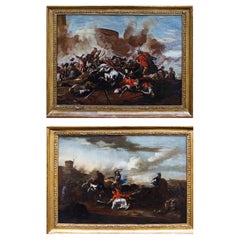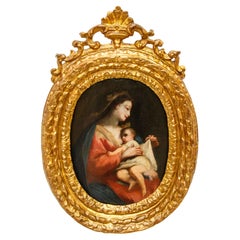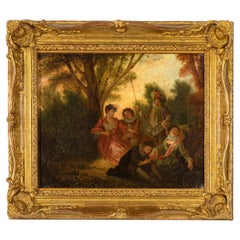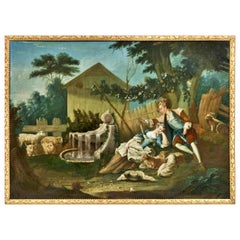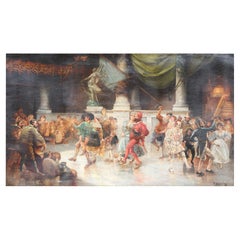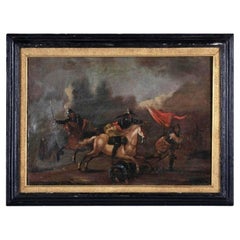Items Similar to 18th century, French School, Gallant scenes
Want more images or videos?
Request additional images or videos from the seller
1 of 16
18th century, French School, Gallant scenes
About the Item
18th century, French School
Gallant Scenes
(2) Oil on panel, 24 x 19 cm
Framed, 44 x 36 cm
This pair of works attributable to the artistic context of the French eighteenth century celebrates the theme of courtly love and sensual pleasure typical of Rococo painting: in fact, two courtship scenes are depicted that closely follow the parameters of the rituals of ancient courts. The festive and fun atmosphere that transpires from the two canvases perfectly reflects the carefree and refined lifestyle of the aristocracy gravitating around the major European courts in the 18th century. Attention to detail, such as precious fabrics, jewelry, and extremely fine ornaments, emphasizes the luxury and refinement of court life, in keeping with the taste and aesthetics of French Rococo. The two works in question fall squarely within the purely eighteenth-century pictorial genre of the gallant scene. This current was radically opposed to the 'imposing and solemn classicism of the previous century, and was intended to communicate an unquestionable sense of voluptuousness, frivolity and inescapable decadence, in a kind of lost paradise. By this time the nobility, deprived almost completely of the power that belonged to them firmly until the seventeenth century, with its lavish parties tried in vain to demonstrate its apparent wealth in these paintings, the voice of the spirit of the age. This current of painting, which, around the middle of the century enjoyed immense fortune, was swept away by the events that followed the French Revolution. In these two small gallant scenes the influence of the activities of the key figures of eighteenth-century art in France, Watteau and Boucher, is strongly felt. Jean-Antoine Watteau was one of the initiators of the Rococo style on French soil, with his scenes of gallant parties and his marvelous bucolic landscapes populated by mythical characters or courtly audiences who madly love life and its pleasures. Influenced by Rubens and the early 18th-century works of the burgeoning Venetian school, with particular reference to Tiepolesque production, the French artist favored the use of a colorful, expressive, and vibrant palette, as well as the use of sharp, fast brushstrokes. Also close to Watteau's teachings was François Boucher, who was more devoted to the perfection of perspective, learned from the Baroque masters, and to the pursuit of a vivid colorism, borrowed from the models, perceived as absolutely illustrious, of Rubens and Correggio. The French artist's courtly and gallant scenes have a bucolic and pastoral air about them, which also seems to be perceptible in these two paintings, mirroring the French artistic climate of the second half of the 18th century.
- Dimensions:Height: 9.45 in (24 cm)Width: 7.49 in (19 cm)Depth: 1.97 in (5 cm)
- Style:Other (Of the Period)
- Materials and Techniques:Wood,Oiled
- Place of Origin:
- Period:
- Date of Manufacture:XVII Century
- Condition:Wear consistent with age and use.
- Seller Location:Milan, IT
- Reference Number:1stDibs: LU5918245122842
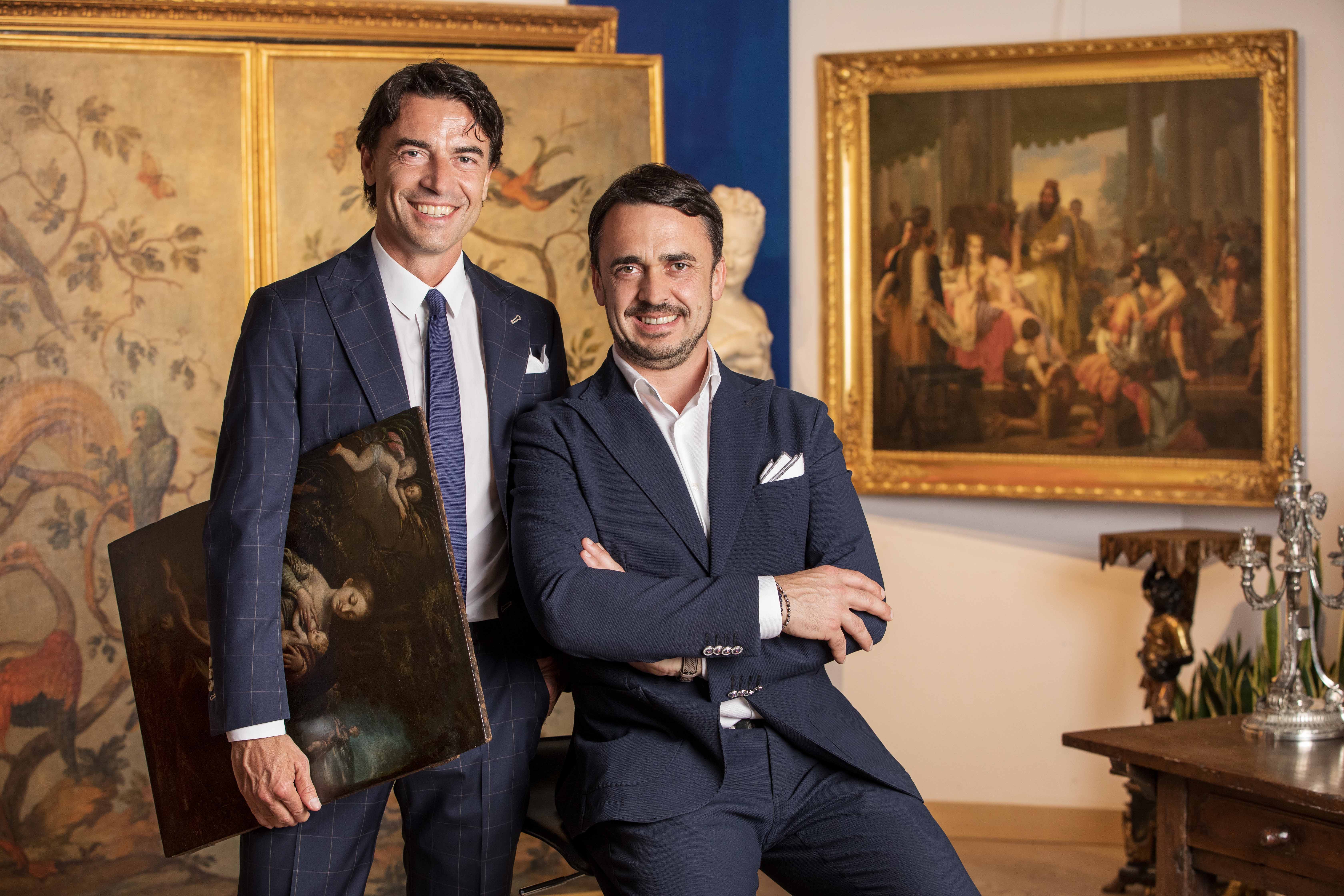
About the Seller
5.0
Vetted Professional Seller
Every seller passes strict standards for authenticity and reliability
Established in 2000
1stDibs seller since 2021
30 sales on 1stDibs
Typical response time: 21 hours
- ShippingRetrieving quote...Shipping from: Milan, Italy
- Return Policy
Authenticity Guarantee
In the unlikely event there’s an issue with an item’s authenticity, contact us within 1 year for a full refund. DetailsMoney-Back Guarantee
If your item is not as described, is damaged in transit, or does not arrive, contact us within 7 days for a full refund. Details24-Hour Cancellation
You have a 24-hour grace period in which to reconsider your purchase, with no questions asked.Vetted Professional Sellers
Our world-class sellers must adhere to strict standards for service and quality, maintaining the integrity of our listings.Price-Match Guarantee
If you find that a seller listed the same item for a lower price elsewhere, we’ll match it.Trusted Global Delivery
Our best-in-class carrier network provides specialized shipping options worldwide, including custom delivery.More From This Seller
View All18th-19th century, French school, the soap bubbles
Located in Milan, IT
French school, 18th-19th century
The soap bubbles
Oil on panel, 44.5 x 36.5 cm
Framed, 60 x 54 cm
In this French school painting, with its leery and playful tone, but mother lovi...
Category
Antique 19th Century Other Paintings
Materials
Canvas
18th Century Scene with Spinner Piedmontese school Painting Oil on Canvas
Located in Milan, IT
18th century, Piedmontese, School
Scene with spinner
Measures: Oil on canvas, 50 x 60 cm
Frame 70 x 80 cm.
Category
Antique 18th Century Italian Paintings
Materials
Canvas
Neapolitan school, 17th century, battle scenes
Located in Milan, IT
Neapolitan School of the 17th Century
Battle scenes between Christians and Turks
(2) Oil on canvas, 52 x 71 cm
Framed, 61 x 80 cm
One genre that met with wide acclaim in seventeenth-century Neapolitan painting and flattering success among collectors was that of battle. The Parthenopean nobility loved to adorn the walls of their salons with battles depicting single acts of heroism or complex combats that exalted patriotism and warlike prowess, virtues with which members of the wealthy aristocracy of the time liked to identify.
The Church, in the Neapolitan area, was also at the forefront of commissions, commissioning artists to depict the spectacular triumphs of Christendom over the infidels, such as the memorable naval battle of Lepanto in 1571, which marked a historical turning point with the great victory over the Turks, becoming a repeated iconographic motif imbued with devotional value, replicated several times through the interest of the Dominican order, which was very devoted to Our Lady of the Rosary, who benevolently followed earthly events from above in heaven. Other themes dear to the Church within the genre were drawn from the Old and New Testaments, such as Constantine's Victory at the Milvian Bridge or St. James at the Battle of Clodius.
Among the leading Neapolitan artists of that period, several specialized in battle scenes: these include Francesco Graziani, known as Ciccio Napoletano, a battler active between Naples and Rome in the second half of the 17th century; Andrea De Lione, who lived in Naples from 1610 to 1685, a versatile narrator of battles without heroes, of horsemen assaulting or retreating, and of profane scenes immersed in a wild and primordial, yet already classicized, nature; and Carlo Coppola. The latter was active for more than twenty years, from 1640 to 1665, and his catalog, which is interesting because it bears witness to a particular historical moment and the tastes of private patrons, has yet to be defined, although many of his works are initialed. It is precisely to Coppola's corpus that these two paintings could come close: with the production of the Neapolitan battler the two paintings seem to share the smoky colors, the accentuated chiaroscuro and the marked dynamism of the scenes. Moreover, it is necessary to mention how that of the battle between Christians and Turks was an absolutely central theme in Coppola's pictorial production. Also close to the manner of the two paintings analyzed here is the production of one of Coppola's most celebrated pupils, Giovanni Luigi Rocco...
Category
Antique 17th Century Italian Other Paintings
Materials
Canvas
$9,016 / set
Mantuan school, 18th century, Madonna suckling the Child
Located in Milan, IT
Mantuan school, 18th century
Madonna suckling the Child
Oil on panel, 27.5x22 cm
The softly collected and intimate dimension suggested by the present painting underscores the cert...
Category
Antique 18th Century and Earlier Italian Other Paintings
Materials
Wood
17th Century Rural Landscape with Gallant Scenes Painting Oil on Canvas
Located in Milan, IT
17th century, Emilian school
Rural landscape with gallant scenes
Oil on canvas, 37 x 47.5 cm
With frame 61 x 50.5 cm
The bucolic amenity of the present is reflected in the joyful gallant scenes that dot its surface. The locus amoenus described reflects on the more traditional inflection of Arcadia, which in the literary transfiguration was the scenario par excellence of the most carefree pastoral life and out of this world; the painting is therefore a forerunner of what was professed by the actual poetic academy of Arcadia which was established in Rome in 1690, but enthusiastically testifies to the feverish invitations to its acceptance, then widespread in the most avant-garde cultural salons throughout Italy. First Theocritus and Virgil later had awakened with Idilli and Bucoliche that capacity typical of the natural world to allow an escape from reality; the contemplation of perfect natural fruits that followed would have evoked in the spirits of dreaming men back to origins. The bucolic landscape was able to positively give a rhythm to material life, and constituted the concretization of a place devoid of incivility and ugliness, where only dreams, wild music and homages to fruitful nature were allowed.
In the present painting widespread figures of shepherd children trace the same intent to the sublimation of earthly life, gathered in pairs, while children on the model of the ancient cherubs cheer the field with flowers and petals. The games of these and the sweet affections of the other characters are rendered through liquid and vibrant brushstrokes, flickering with a white light that opposes the dark shadow of the undergrowth. In the distance, the sky tapers with a silvery and flat brushstroke, while the vertical development of the promoters with architectures helps to introject a bright beam of light into the grassy clearing. The foliage and the turf of the landscape piece are rendered through a digital brushstroke, betraying the Italian brand of the present, influenced at the same time by the seventeenth-century European influences that then conveyed to the capital. The evocative culture of the city attracted many artists from the city of Bologna, from the Italian north but also from the territories beyond the Alps, such as Claude Lorrain and Nicolas Poussin. The historical-artistic heritage of the Italian pastoral scenes was thus able to fill up with the more functional and particular formalisms of the charms coming from elsewhere, such as the expressive tremor of the present, similar to the contemporary French lexicon.
The typological restitution from pastoral idyll, in accordance with the intrinsic stylistic qualities of the work, allows us to specify the solid belonging of the present to the Italian hand, similarly to what was then emerging in the pictorial sphere within the Emilian school. In this regard, we should recall the latent influences of two decisive foreign landscape painters who passed through the Emilian belt, such as Claude Lorrain (1600-1682) and Nicolas Poussin (1594-1665); before them, Giovanni Battista Viola...
Category
Antique 17th Century Italian Paintings
Materials
Canvas
18th Century Four Rural Scenes Painting Tempera on Paper
Located in Milan, IT
XVIII century Rural scenes
(4) Tempera on paper, 20 x 31 cm
With 18th century Venetian mirrored frame, 31 x 39 cm.
Category
Antique 18th Century Italian Paintings
Materials
Paper
You May Also Like
Gallant Scene Painting by Philippe Mercier, 18th Century
Located in Lisbon, PT
An 18th century painting of a gallant scene in a park.
Attributed with seal of painter's studio to Philippe Mercier (1689 to 1760) from the circle of the french painter Nicolas Lanc...
Category
Antique 18th Century French Baroque Paintings
Materials
Canvas, Wood
"Galant Scene" Oil on Canvas, French School, 18th Century
Located in Madrid, ES
GALANT SCENE
Oil on canvas, French school, 18th century.
Dim.: 64 x 115 cm.
good conditions.
Category
Antique Early 18th Century French Baroque Paintings
Materials
Paint
$4,161 Sale Price
20% Off
Italian School, 19th Century, 18th Century Ballroom Scene
Located in West Palm Beach, FL
Italian School, 19th Century,
18th Century Ballroom Scene
signed l.r. indistinctly, F. P....., oil on canvas, 30 by 52 in., overall in a gilt frame 34.5 by 57.5
Provenance: From the...
Category
Antique 19th Century Paintings
Materials
Canvas
French School 18th Century "Battle"
By France"
Located in Madrid, ES
French achool 18th century "Battle".
46cm x 67cm.
Oil on canvas.
Good condition.
Category
Antique Early 18th Century French Baroque Paintings
Materials
Paint
18th Century French School Portrait of a Man
Located in New York, NY
Portrait of a man
France, late 18th-early 19th century
oil on canvas
Measures: H 41.5 in (105.5 cm).
Category
Antique Late 18th Century Paintings
Materials
Canvas
Italian School "Landscape", 18th Century
By Midcentury Italian school
Located in Madrid, ES
Title: Landscape.
Date/Period: 18th century.
Dimension: measures without frame 89cm x 61cm. Frame 15cm in plus. with gold trim.
Materials: Oil on canvas.
Additional information: Ital...
Category
Antique Mid-18th Century Italian Baroque Paintings
Materials
Paint
